Transparent Samobor Provides Automated Display of Payments, Contracts
July the 27th, 2021 - Transparency isn't something the Croatian authorities are all that used to. With corruption apparently being tackled with a wave of new mayors and local government units doing things differently, one continental Croatian town is going a step further. Meet transparent Samobor.
As Poslovni Dnevnik/Lucija Spiljak writes, in July, Samobor became the only city in all of Croatia to boast an automated display of all of the payments, invoices, contracts and purchase orders made by Samobor's administration in one place, thanks to the digital service iTransparency made by the Zagreb IT and consulting company Libusoft Cicom.
This digital service enables the creation of a transparent Samobor, the publication of timely, accessible, accurate and credible information on the implementation of budget items, which, among other things, prevents irresponsible actions and misuse of public funds, while local government units are encouraged to publish and explain their own budget documentation.
At the same time, the general level of information available to people, the media, entrepreneurs and even investors about local strategies and actions and their results has been raised, and it's all available in just a few clicks on the following website: https://transparentno.samobor.otvorenigrad.hr/isplate.
The director of the company responsible for the development of the newly transparent Samobor's service, Marko Ignjatovic, explained just how the system works and what it means for this city.
“Samobor is currently being provided with insight into payments made out to both individuals and legal entities, as well as incoming invoices, contracts and purchase orders, which will provide people with an accurate insight into all operations. On top of that, further improvements in functionality are being made to make new search and filtering capabilities available; according to time and the desired classification.
The possibility of corruption is definitely now reduced to a minimum and from our experience so far, we can say that the first results are visible very quickly. Unlike some competing solutions, our iTransparency system simply connects to other systems, and all of the data comes in automatically. In this way, additional costs and the possibility of mistakes are avoided, and business itself is facilitated,'' stated Ignjatovic.
The value of the project ranges from 20 to 30,000 kuna. and the company's team gradually developed and upgraded it over the years, while the introduction of the system in Samobor was worked on intensively for two weeks.
The iTransparency service is just one of the nine functionalities of the company within the LC Platform Open that can be implemented in the business of counties, cities and municipalities.
"So far, about 20 cities and about 10 municipalities have joined the project, and some more are currently in the process of being introduced. Digitisation and transparency are no longer a matter of choice but a legal obligation. As a direct consequence of the introduction of digitalisation and transparency, JLP (R) S is becoming more open to people, it's becoming easier and faster to communicate digitally, we can facilitate business insight, and it allows for more efficient budget management and the optimisation of investments,'' said the director.
Most of their team, out of a total of 140 experts, are based in Zagreb, but in order to be more easily accessible to many users, some are located in four business centres in Dalmatia, Primorje, Istria and even further east in Slavonia.
So far, they have achieved successful cooperation with more than 1,200 users, which include budget users, utility companies, residential building managers, companies and non-profit organisations, meaning that the newly transparent Samobor is one client in a long line for this successful Croatian enterprise.
“Thanks to 29 years of experience and numerous references, we've become leaders in the segment of software solutions intended for local and regional self-government units. We're proud to be able to stand out in the field of customer support, consulting services, online education and consulting, system and technical support, design and implementation, etc. Thanks to this transformation of business and comprehensive service, in addition to being an IT company here on the Croatian market, we've also profiled ourselves as a successful consulting company,'' stated Ignjatovic.
For more, follow our politics section.
Exploring Zagreb County: Nomading in Samobor and Tihocaj, Zumberak Nature Park
June 29. 2021 - Zagreb is much more than a city, as participants of Zagreb Digital Nomad Week found out on the last day on aa tour of the county to Samobor and Tihocaj in Zumberak Nature Park.
After a stimulating and intense week of keynote speeches, panel discussions, networking and socialising, the final day of Zagreb Digital Nomad Week on Sunday took participants out of the city to explore Zagreb County.
The day, organised by the Zagreb County Tourist Board, is a continuation of the successful partnership with the Zagreb City Tourist Board on the Around Zagreb project, an attempt to showcase the natural, cultural and adventure options available in the county a short distance from the city.

The intense heat necessitated a shorter day, but where better to start than historic Samobor, a delightfully charming old town a short drive west of Zagreb. And for all its historic charms, it was the natural ones that were the biggest initial attraction - the cooling air and spectacular nature along the river were a delight.

The main attraction and centre of life, however, is the delightful main square of Samobor, which is an excellent event venue. The Samobor Jazz Festival is currently taking place for a month.

And if there is one thing you must try when in Samobor, it is the famous Kremsnita, a deliciously light dessert for which the town is rightly famous. The visiting digital nomads needed no second invitiation.
To learn more about Samobor, check out the Total Croatia guide, Samobor in a Page.
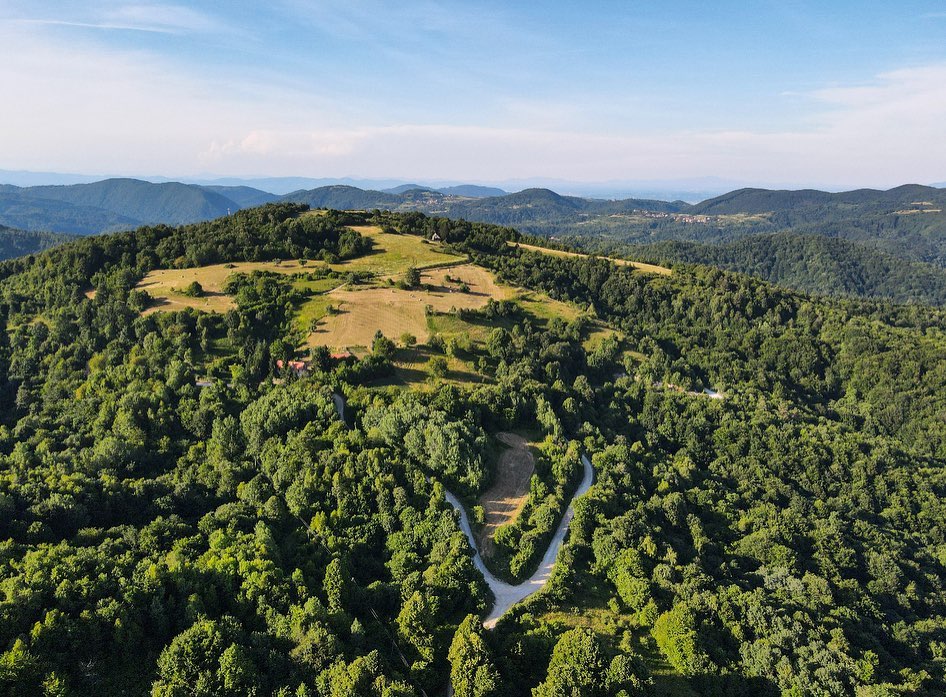
The main attraction of the day, however, was a little higher up - the Green Hills eco-village in Tihocaj in Zumberak Nature Park. Tihocaj is home to, among other things, the first free-range wagju cows in Croatia. A village which has not seen cows for 40 years now has 7 black Japanese residents.

This unusual story is thanks to Nikola Bozic, the pioneering owner of one of Croatia's premier meat restaurants - Djurina Hiza in Varazdinske Topilce - who bought the cows in appalling conditions and brought them to the natural paradise of Zumberak Nature Park, leaving them free to roam in 20,000 m2 of pristine nature. You can learn more about their journey from Medjimurje to their new home in this TCN feature story on that journey - it was quite a day. Medjimurje to Zumberak: Transporting Croatia's 1st Free-Range Wagyu Cows.
Tihocaj has obviously been relaxing for Dougal the bull and his three female companions, for each has given birth to a calf within the first year.
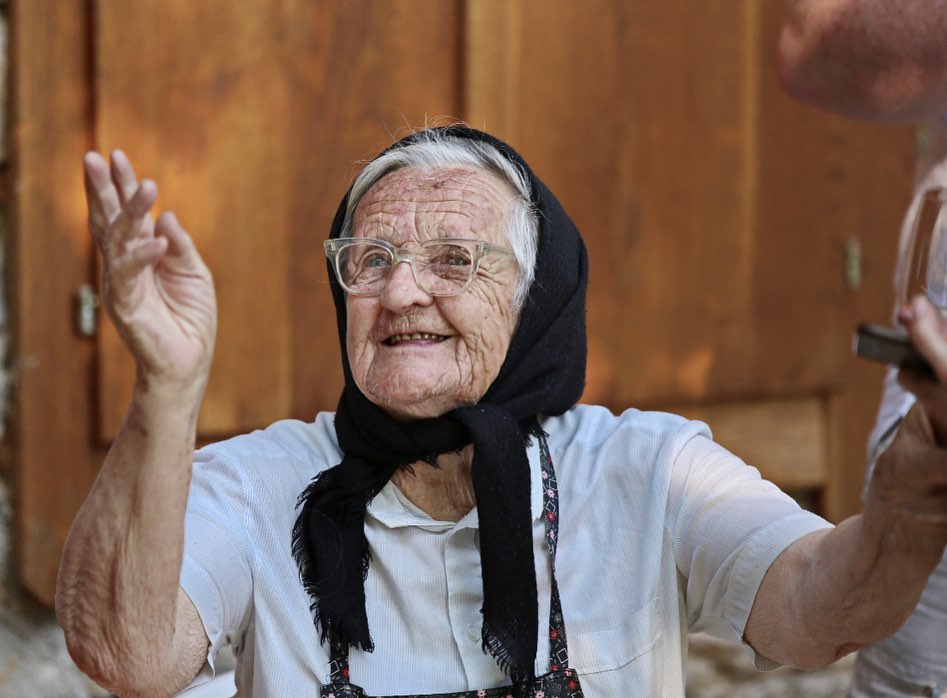
The only resident of Tihocaj today is Mare Gvozdanovic, who is 95. Mare has lived in Tihocaj for 50 years, and when she arrived, there were 150 people in the area, with plenty of children. The very remote spot is a divine spot, but far from local amenities. Mare lost her husband 4 years ago and now busies herself in the village, looking after her vegetable and talking to her Japanese four-legged neighbours, while enjoy the spectacular views and clean air.
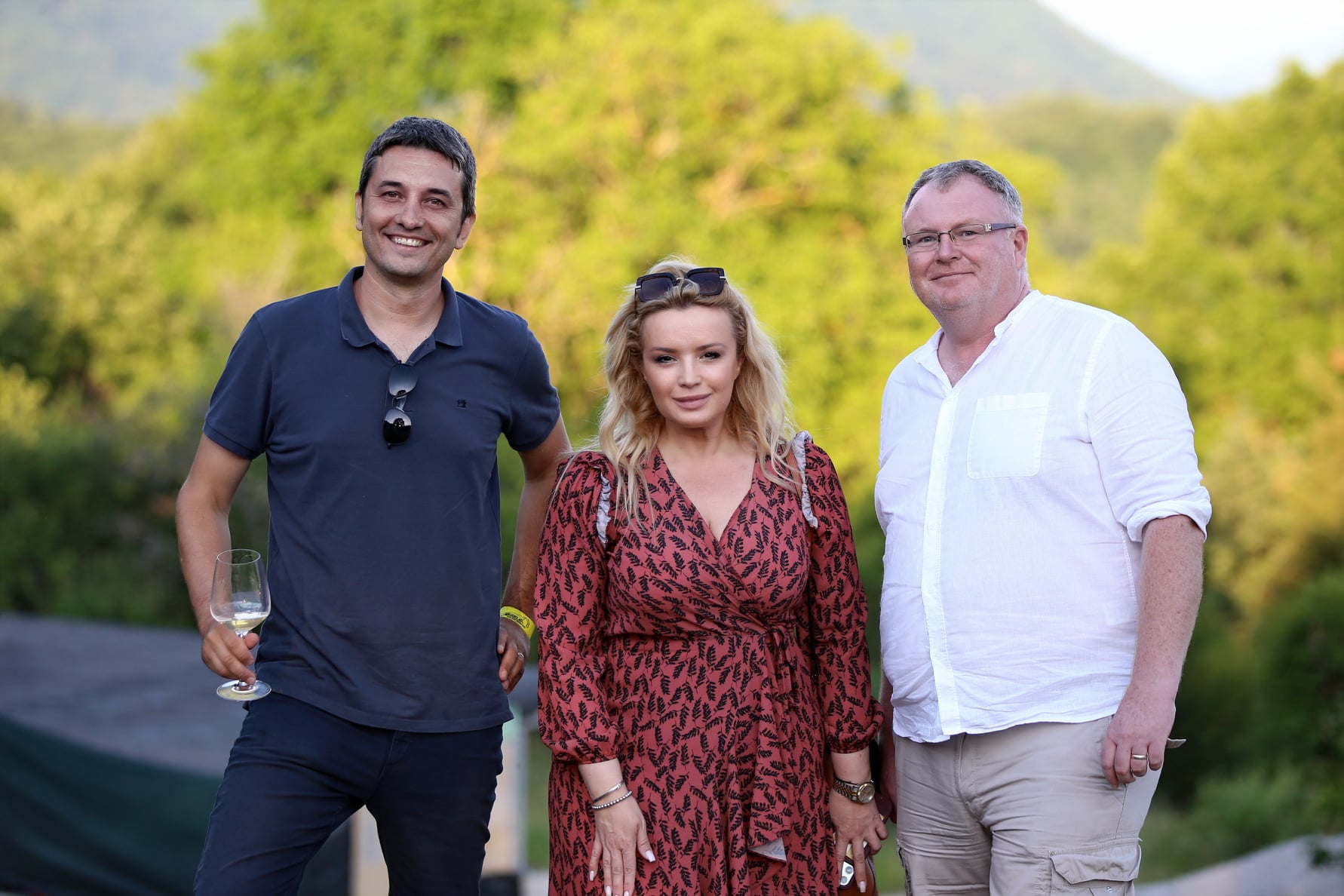
She will not be alone for long, for Tihocaj is home to one of the most interesting projects I have some across in Croatia. Local boy and serial entrepreneur, Davorin Stetner, our co-host - along with Ivana Alilovic, Director of the Zagreb County Tourist Board (seen with TCN above), has been buying the land and property in and around the village, while also creating an eco-farm.
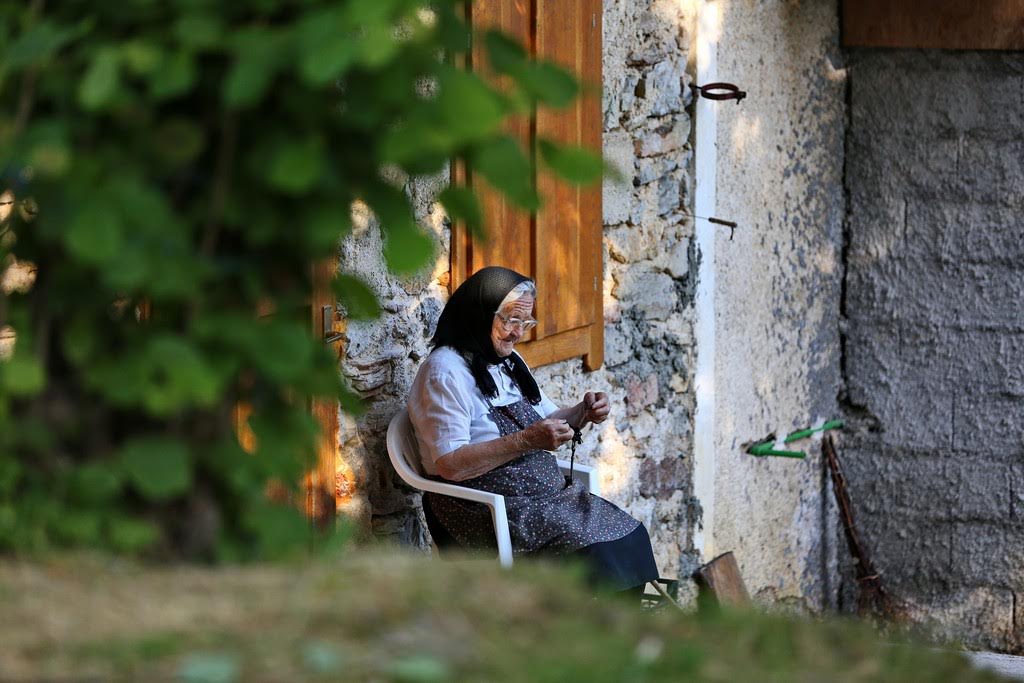
But this is no ordinary eco-farm, for it comes with its own helipad, high-speed Internet and (soon) swimming pool. The properties are being refurbished authentically, a wine cellar built, and there are no neighbours for miles.

Perfect conditions, perhaps, for digital nomads wanting to work remotely in total peace, but connected to the world on their terms. There were plenty of murmurs of appreciation from the visiting nomads.
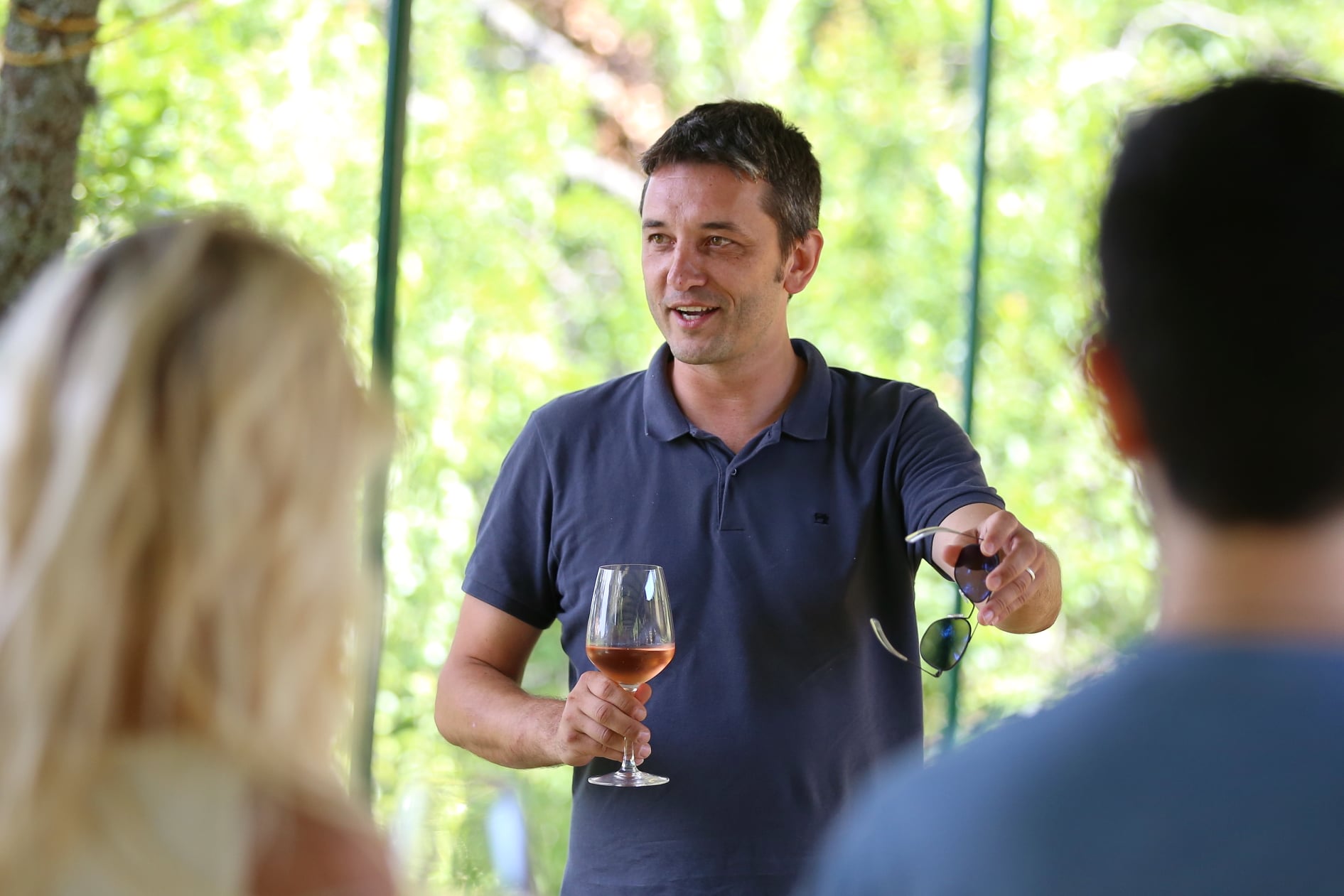
Stetner organised a wine tasting and barbecue for his guest, with music in the background. Private parties in total isolation.There have already been several helicopter visits and VIP guests. Tihocaj is very much a work in progress, but it is scheduled to open for bookings next year.
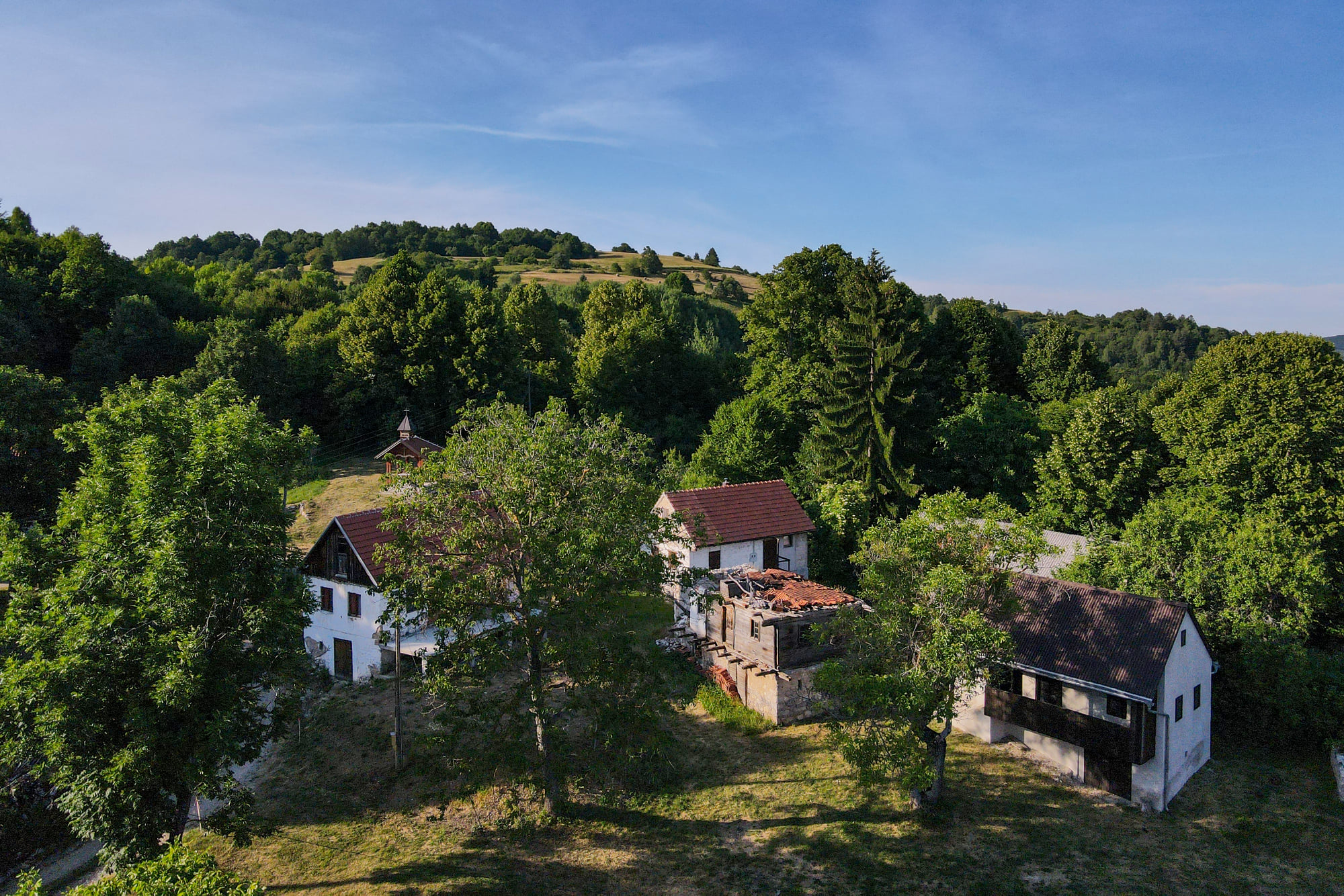
As excellent day to end a truly excellent week. The engagement from all the stakeholders was outstanding, and Zagreb truly shone. I was very pleasantly surprised at just how much the visiting digital nomads enjoyed the city. How digital nomad friendly is Zagreb? It seems from following the participants of Zagreb Digital Nomad Week 2021 that the answer is VERY!
Dean Kuchel of Digital Nomad World put it very well when asked what Zagreb is missing in this video interview.
"The only thing missing in Zagreb is more digital nomads."
To learn more about the charms of Zagreb County, click here.
More on Zagreb Digital Nomad Week.
For more news and features on digital nomads in Croatia, visit the dedicated TCN section.
Samobor Mobile Homes Showcase Croatian Production Through Exports
April the 22nd, 2021 - Samobor mobile homes are being shipped to Sweden and gaining more and more attention to this otherwise little known fact about Croatia - that it produces quite a significant amount of mobile homes.
As Poslovni Dnevnik/Marija Brnic writes, until recently, little was known about Croatian mobile home production but it turns out that it is quite the fruitful sector, which we realised the extent of only with the recent earthquakes having taken place, the worst being in Petrinja back in December 2020.
Among the most developed brands is Samobor's Nord Produkt, a leading Croatian manufacturer of faucets and bathroom furniture, as well as kitchens, which entered this special niche eight years ago. So far, 2,200 such Samobor mobile homes have been produced, but despite its success, it isn't immune to the significant mark the ongoing coronavirus pandemic has left on the global economy.
Over recent years, these Samobor mobile homes have become increasingly sought after for tourist accommodation, and the buyers are some of the largest Croatian hotel houses that are developing their own forms of luxury camping tourism.
Last year, which was full of entirely unprecedented circumstances including intermittent lockdowns and an uncertain tourist season, saw investment and demand halted. According to Nord Produkt and Nord Mobil CEOs Hrvoje Hazler and Iva Jerkovic, things are still significantly weaker in the tourism sector. Some orders have been delayed, and inquiries are coming more frequently from private buyers.
The annual production capacity of these Samobor mobile homes stands at 400, and the record was back in 2018 when they produced as many as 600 of them. The crisis caused by the pandemic, which also made travel difficult to the main export markets of Slovenia, Austria, Germany and Sweden, was used by these hardworking Samobor residents for the development of new products and the strengthening of the brand in the programme of winter houses, which can withstand temperatures down to -25 degrees Celsius and a load of 600 kilograms per square metre of roof.
Thanks to these Samobor mobile homes, Iva Jerkovic pointed out, the company is also recording an increase in exports. About 15 percent of their revenues are generated owing to exports, and the goal, they stated from Nord Produkt, is to increase that share to 30 percent. The acquisition of the well-known Slovenian brand Armal should also contribute to this, especially in the regional market.
For more, make sure to check out Made in Croatia.
City of Samobor Funds Castrations, Sterilizations, and Microchipping for Dogs and Cats!
April 1, 2021 - Some feel-good news to start your Thursday as the City of Samobor funds castrations, sterilizations, and microchipping for dogs and cats!
Radio Samobor reports that the City of Samobor has set aside 100 thousand kuna to finance and co-finance the castration, sterilization, and microchipping of dogs and cats. For some citizens, the cost is fully covered. All unemployed persons, persons with disabilities, pensioners, and Croatian veterans of the Homeland War can mark their dogs with a microchip free of charge or castrate or sterilize their dogs and cats.
One owner can apply for funding for one animal per year. Owners of dogs and cats entitled to funds from the City in full are obliged to submit the necessary documentation to the City, depending on the category to which they belong. These are a certificate of residence in the area of Samobor, a certificate that they receive a pension of less than 2,701 kuna, a certificate that they are registered with the Employment Service no earlier than January this year, a certificate that they have a total of more than 80 percent disability or a certificate of the status of a Homeland War Croatian veteran with a minimum of 100 days of participation in the war. When the applications are approved, 100 percent of the covered costs of castration, sterilization, and microchipping are carried out exclusively at the Veterinary Station Samobor.
All other pet owners can apply for co-financing in the amount of 50 percent of the cost, up to a maximum of 150 kuna for castration of cats, 200 kuna for castration of dogs, 350 kuna for sterilization of small female dogs, 400 kuna for sterilization of medium female dogs, 450 kuna for sterilization of large female dogs, and 200 kuna for sterilization of cats.
Procedures co-financed can be performed at three locations in Samobor, at the specialist veterinary practice Dogtor, veterinary clinic Maza, or in the Veterinary Station Samobor. For more information on co-financing the procedure, it is necessary to contact one of these clinics in person.
Applications for financing and co-financing of castration, sterilization, and microchipping of dogs and cats are received until 31 December this year or until all allocated funds are used.
For more about lifestyle in Croatia, follow TCN's dedicated page.
Want to know more about pets in Croatia? CLICK HERE.
Croatian Police and Deminers Rescue Several Migrants From Minefield
ZAGREB, 5 March, 2021 - Police and deminers yesterday and today rescued several illegal migrants whose lives were in jeopardy in the mine field in Saborsko municipality, after one migrant was killed and several sustained injuries in a landmine blast, the Interior Ministry (MUP) said on Friday evening.
Members of Lučko Anti-Terrorist Unit yesterday searched the area by helicopter and then warned migrants that they were in a mine suspected area and should stay in place until help arrives. Deminers of Lučko Anti-Terrorist Unit this morning started to inspect the field and create a safe corridor for evacuation and ten persons were rescued and offered medical help.
MUP said in the press release that a group of foreign nationals had illegally reached Croatia and entered a mine suspected area in a forest area in municipality Saborsko. There, a younger man stepped on an unidentified explosive device and died, while other persons from the group sustained injuries in the blast. After receiving a report, police officers found one man dead and one injured, while the rest of the group went away in unknown direction.
According to the interior ministry, at the moment six persons have an intention to make an application for international protection in Croatia, while other persons are in medical care due to having sustained injuries.The life of one of them is in danger.
The Ministry of the Interior and Croatian police, it is recalled, have been intensively underscoring the dangers of illegal migrations since 2018, especially warning of the danger of mine suspected areas, severe winter conditions in the mountains and rivers.
Samoborska Cesnofka Becomes Protected Product After Kremsnita and Greblica
February 19, 2021 – In a relatively short period, more good news came from Samobor, both for the citizens of this tradition-rich town and its surroundings and for all local cuisine lovers. Namely, after the Rudarska greblica and samoborska kremsnita, samoborska cesnofka also became a protected product. Enough reason to visit this charming medieval town in Zagreb County this weekend?
Samoborska češnofka, a favorite Samobor garlic sausage, received national protection of geographical origin from the Ministry of Agriculture. This transitional protection at the national level is an essential first step towards gaining the status it deserves on the European gastronomic map.
Tradition of more than a hundred years
When the European Commission decides to protect it on the EU level, samoborska cesnofka will be protected from unauthorized use and misuse throughout the European Union market, just like Rudarska greblica now, a local specialty from Samobor area. However, Samoborska kremšnita entered the Croatian Register of Protected Cultural Heritage.
Samoborska češnofka, named after its main ingredient – a decoction of garlic (in Croatian – češnjak), has been produced for over a hundred years in a specific way from pork, beef, and lard, and a decoction of fresh garlic and dry wine, with each butcher adding its own flair to this recipe. It is eaten with greens, beets, potatoes, and goes best with traditional Samobor cornbread, which will be the next autochtonous Samobor product to get its protection.
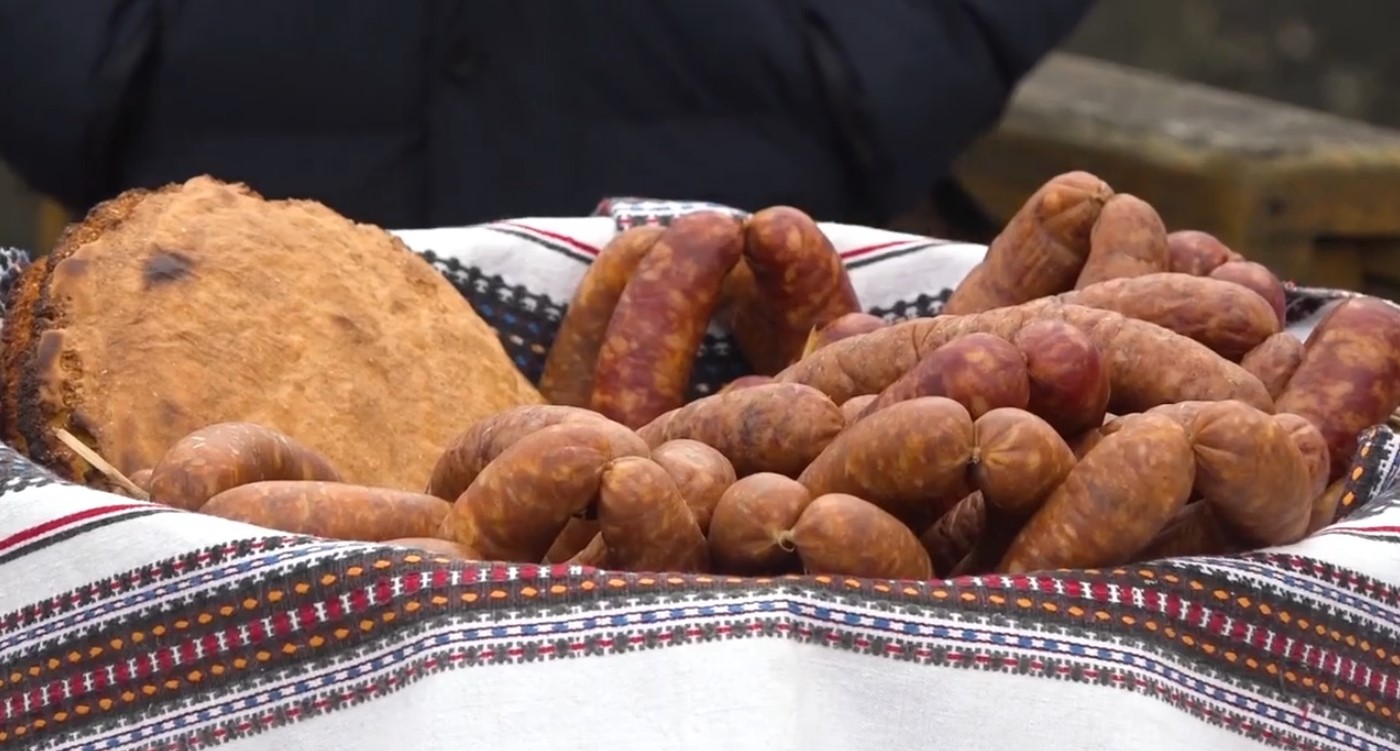
The members of the Ethno Fletno Association are working on protecting Samobor cornbread, usually eaten with Samoborska cesnjofka, but also other home-made dishes. / Screenshot Televizija Zapad
A few years ago, the City of Samobor even launched the Češnofka Festival, but due to the coronavirus pandemic, it was not held last year. This year, it will be held if the epidemiological situation allows it. And not only that. On the occasion of protecting samoborska češnofka, the Deputy Mayor of Samobor, Željko Stanec, announced a center for various Samobor tradition guardians.
Samobor gastronomic delicacies available in the "to go" offer
The diligent hands of the people of this region write the history of taste worth experiencing. Although the restaurants are still closed, all the flavors of the Samobor region are available in the "to go" offer in the "K Gabreku 1929 "cellar, the favorite Kavana Livadić, and "U prolazu" confectionery for the well-known kremšnite in Samobor.
Therefore, you can spend this 'almost' spring weekend in Samobor, 30 minutes away from Zagreb's capital, with protected indigenous flavors. This charming town along the Slovenian border dates back to 1242 and the charter by which King Bela IV confirmed the status of a free royal trading post.
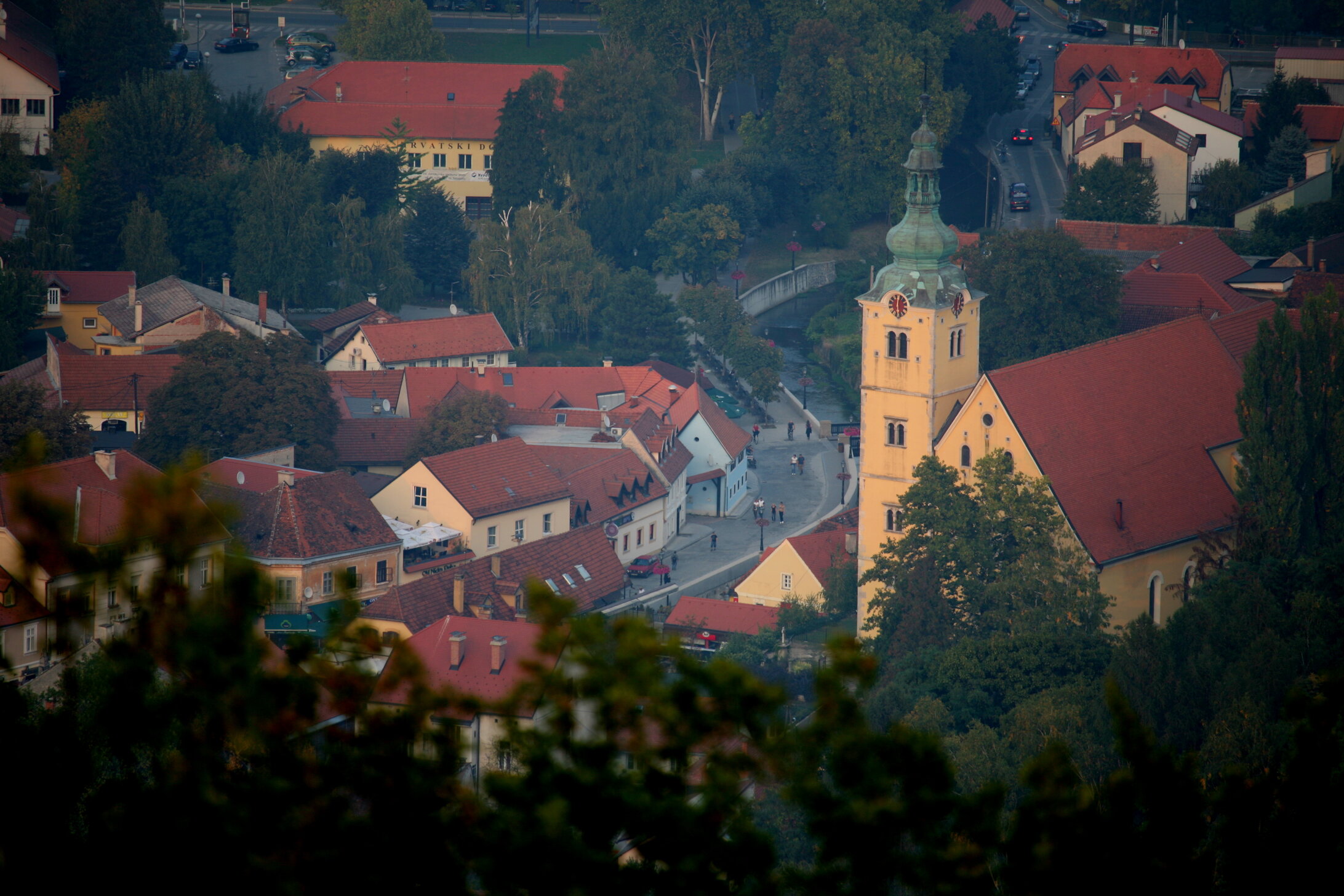
Samobor / Zagreb County Tourist Board
Also, Samobor Square is one of the few where all buildings are protected monuments of the first category. Right next to the main square, in the Filipec family tasting room, you can taste another Samobor gastronomic icon – bremet, the most famous liqueur in the Zagreb region. Samobor bermet is an aromatized red wine made from selected varieties of Portuguese and Frankovka grapes with wormwood and southern fruit. The secret recipe dates back to the time before Napoleon.
Zagreb people's favorite excursion destination
This urban pearl of Zagreb County, with its preserved old town, but also with numerous cultural sights, has always attracted excursionists and tourists.
A walk through Samobor comes across the Samobor Museum, the former dock of the composer Ferdo Livadić and a gathering place for cultural greats of that time. The Old Samobor Town ruins, a former castle that watches over the town in the lowlands, hide its turbulent history.
From 1268 until recently, this building was owned by many different families. It used to flourish with life, and now there is only one beautiful monument left to the destructive ravages of time. Over the centuries, numerous nobles and kings were the lords of Samobor-grad, from the Czech king Otokar, who built it in 1268, to Arpadović, Frankopan, Erdody, Matija Korvin, and many other blue blood families.
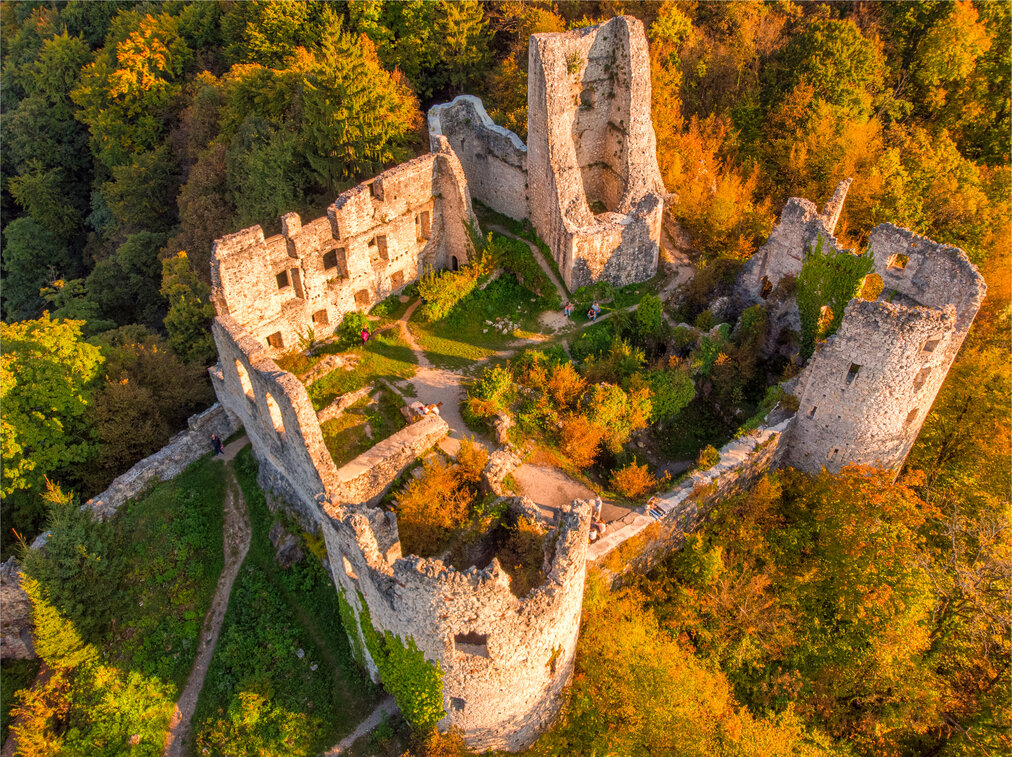
Ruins of Samobor Old Town / R. Klarić, Zagreb County Tourist Board
As the owners changed, so did this castle. In 1902, the Old Town ended up in Samobor's ownership for 5,293 crowns. Since then, attempts have been made to rebuild it, but no attempt has borne fruit. But maybe even better, because the castle in this form has some magic that it might not have if it wasn't in this state. There is a spirit of the time in it. It hides among the walls and swims among the surrounding trees. This place truly breathes some unique energy. The fort is located in a forest not far from the center of Samobor.
Oh, and did you know that Samobor's Old Town was almost fatal for Jackie Chan, who nearly perished here while shooting the famous film God's Armor?
Oldest mine, nature park, mountain peaks, and educational trails
Only five kilometers away from Samobor, in the Rude village, you can visit the Mine of St. Barbara, one of Europe's oldest copper and iron mines. This small settlement gave rise to the mentioned first protected gastronomic product of the Zagreb County – a crispy salt pie Rudarska greblica, once a modest snack of local miners.

Rudarska greblica / Josip Škof, Zagreb County Tourist Board
Outside Samobor, with a walk in the fresh air, unforgettable views uphill of the Samobor Hills, a protected Nature Park together with Žumberak, await to be discovered. There are many marked trails, and they will satisfy both beginner walkers and ambitious climbers. Although none of them is higher than 1000 meters, the peaks Oštrc, Japetić, and Okić are key places in Croatian mountaineering.
The first trip under the Croatian Mountaineering Association's auspices was organized in 1875 to Oštrc, and the ascent of the writer Dragojla Jarnević on the steep side of Okić in 1843 was Croatian's first recorded alpine venture.
You can add an educational note to the trip by visiting the Budinjak Eco Center and the Educational Trail of Princes, a prehistoric site with a site of old burial mounds, or the Ethno House under Okić. In this rural household, time stood still more than a century ago.
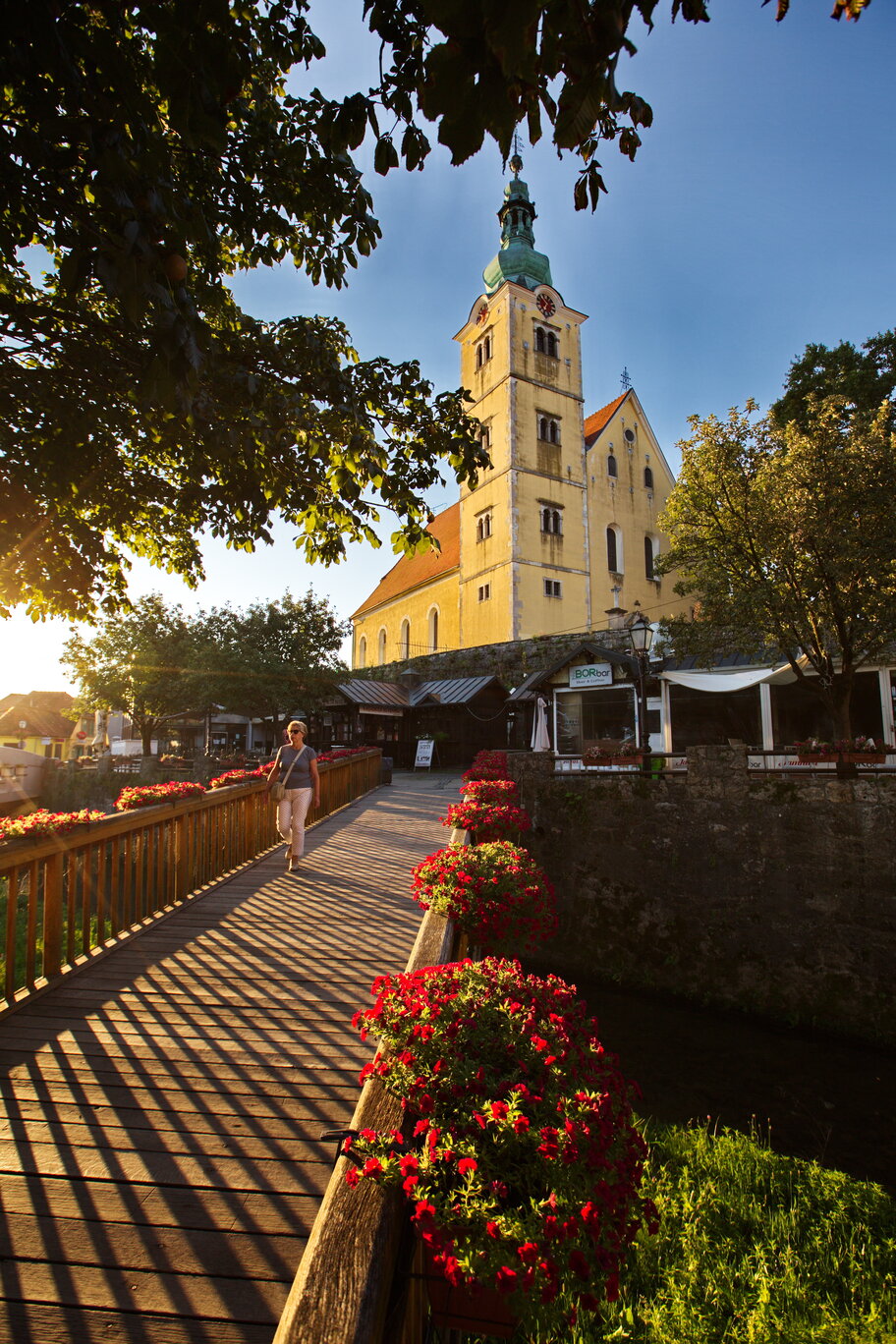
Welcome to Samobor / Josip Škof, Zagreb County Tourist Board
Source: Zagreb County Tourist Board
To read more news from Croatia, follow TCN's dedicated page.
Samoborska Kremsnita Awarded Status of Intangible Cultural Good!
February 2, 2021 – According to the Ministry of Culture and Media's decision, the traditional dessert samoborska kremsnita, as well as the transfer of skills, practices, and traditions of confectionery, has received the status of an intangible cultural good. It will be inscribed in the Register of Protected Cultural Heritage of the Republic of Croatia.
As reported from the City of Samobor, the most popular local dessert, samoborska kremšnita, is now legally protected as an autochthonous Samobor and Croatian brand. As of January 18, 2021, samoborska kremšnita wears the title of intangible cultural property of Croatia.
As the Ministry explained, this dessert made of puff pastry and whipped egg cream is known by various names and variants in Central and Mediterranean countries. One of the most famous in Croatia comes from Samobor.
The original recipe was created in the 1920s by confectioner Đuro Lukačić, who prepared them until 1966, after which he assisted in their making. Two confectioners, Višnja Vukmanović and Branka Žganjer transferred the original recipe and knowledge to Kavana Livadić and the pastry shop "U prolazu," which are also holders of the intangible cultural property.
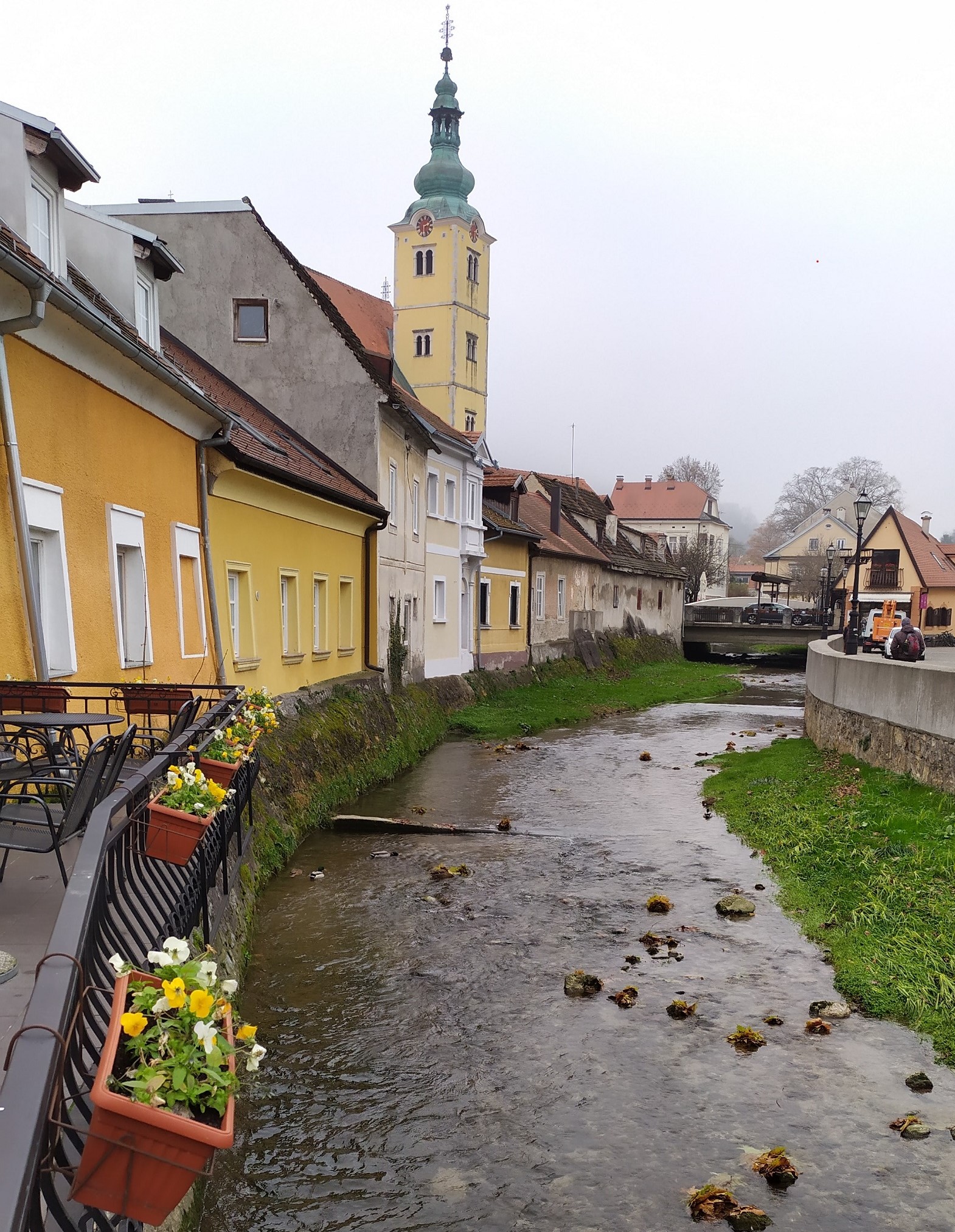
Samobor / Donatella Pauković
The tradition of making samoborska kremšnita is cherished in these pastry shops to this day so that this foamy dessert is enjoyed by many visitors, guests, tourists, excursionists, and mountaineers.
The queen of all cakes is how she is called in Samobor. Samoborska kremsnita is one of the symbols and the first association with Samobor in Croatia and abroad. It's a dessert that encourages people to visit. It is almost unthinkable to visit Samobor and not taste a nice light yellowish cream between the crispy puff pastry.
Sometimes, you must wait in line for samoborska kremšnita, but that is fine. It is brought home as a souvenir from Samobor, even if it has cooled down on the way.
There are several recipes for this cake, but samoborska kremšnita is unique because of its preparation and the Samobor ambiance that should be enjoyed while eating it.
The samoborska kremšnita is truly an exceptional dessert worthy of admiration. It also testifies that it was, along with popular Croatian cake mađarica, recently declared one of the 100 most popular cakes in the world according to the TasteAtlas portal, taking 84th place on their list.
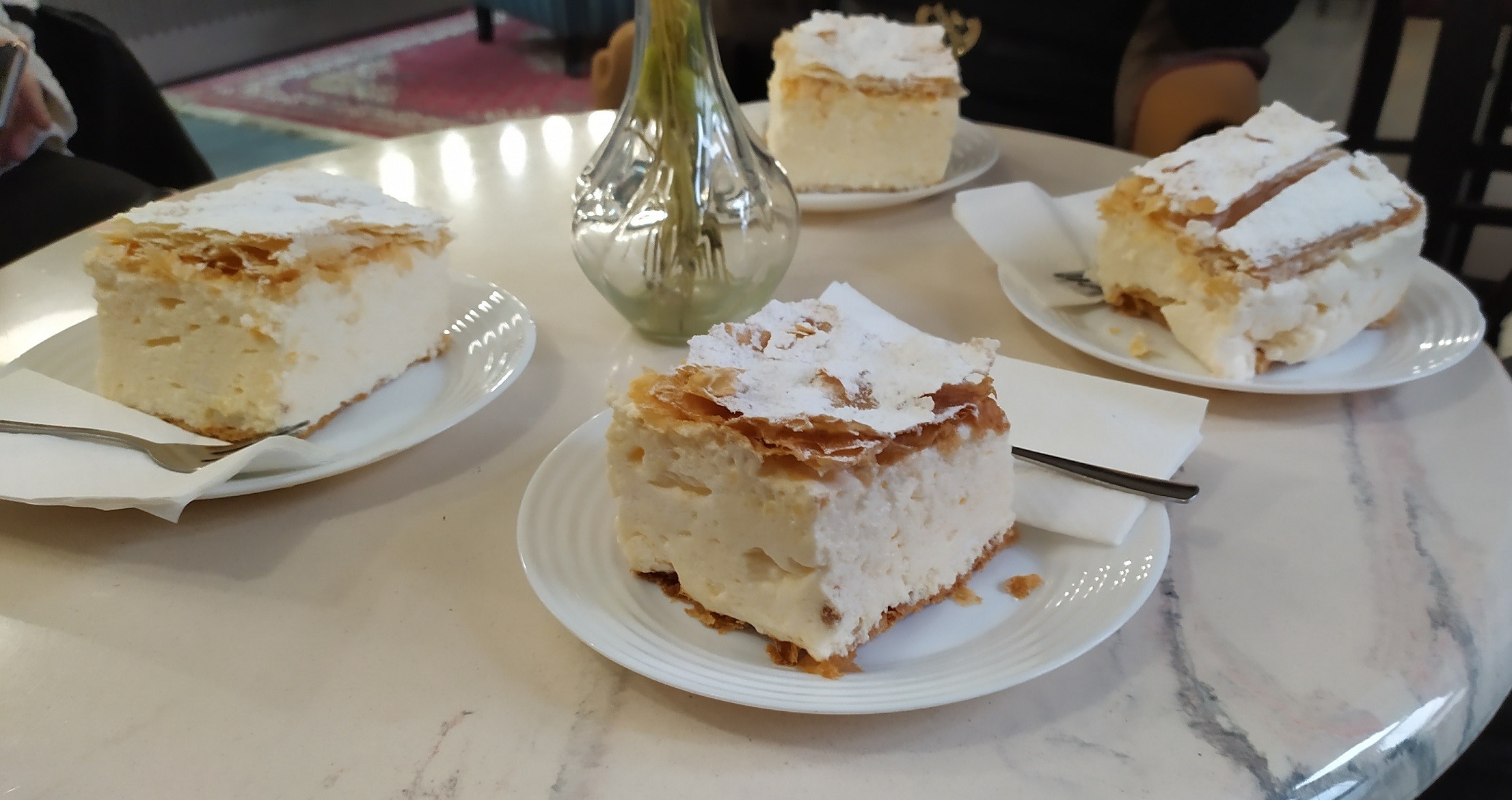
Samoborska kremšnita enjoyed in one of Samobor's pastry shops / Donatella Pauković
However, samoborska kremšnita is not the first dessert from the Samobor area that received this title. Namely, a salty cake originating from the village of Ruda near Samobor named rudarska greblica was also declared a protected intangible cultural good. According to tradition, this cake used to be prepared back in the 16th century when mining flourished in Rude. Their wives made this cake for local miners. The "Days of Rudarska Greblica" event has been held in the village of Rude for years.
Since it is impossible to travel and taste traditional dishes of different destinations due to the ongoing coronavirus pandemic, you can always try to make samoborska kremšnita yourself at home. Of course, nothing can replace a visit to Samobor and tasting traditional kremšnita in the ambiance of this beautiful medieval town, but until we can do it again, use your time to try this recipe.
Tourist Boards in Zagreb County Develop Gourmet and Cultural Tourism
January 19, 2021 – Tourist boards in Zagreb County are uniting in two projects – to develop and promote cultural and gourmet tourism.
The new Law on Tourist Boards and the Promotion of Croatian Tourism encourage the tourist boards' association, both project-wise and formally. Local and regional tourist boards, as well as tourist boards and local self-government units that do not have an established tourist board for their area, may join a project (agreement) association.
Many tourist boards have already taken advantage of this opportunity, such as the Zadar Archipelago and Southern Istria tourist boards, and more recently, the tourist boards in Zagreb County.
Namely, they unite to promote and develop cultural and gourmet tourism. As the Zagreb County Tourist Board director Ivana Alilović points out, their goal is to intensively promote the Zagreb Green Ring region and existing tourist products and programs.

Scene from Zagreb County / Romeo Ibrišević, Zagreb County Tourist Board
"Our goal is integrated quality management of the Zagreb County's tourist destination product, which will reduce the gap between the level of quality that tourists expect and the level of quality that the destination can provide and deliver. Also, we want to improve the quality and content of Zagreb County tourism product, increase tourist satisfaction and tourist spending in Zagreb County and the benefits for entrepreneurship in catering and tourism," says Alilović.
Gourmet tourism in Zagreb County
Local tourist boards of Jastrebarsko, Samobor, and Sveti Ivan Zelina cities have concluded an agreement on the local Zagreb County Tourist Boards' association. In this first project, the joint activity will be the development of gourmet tourism. Wine roads and cheese roads are among the many tourist attractions of rural, eno, and gastro tourism of Zagreb County.
Vineyards and wine cellars in Zagreb County are located on three wine roads – Plešivica Wine Road, Zelina Wine Road, and Samobor Wine Road. Along wine roads, you can find Purtugizec Plešivica and Kraljevina Zelina wines from the Zagreb County brand, as well as Bermet, a traditional and widely recognized Samobor aromatized wine.
Also, there are wines produced from indigenous varieties Plavec yellow, sweet Zelenac, and Šipelj, and many other wines such as Chardonnay, Sauvignon, black, gray, and white Pinot, Rhine Riesling, Traminer, Frankovka, Škrlet, yellow Muscat, Šipon.
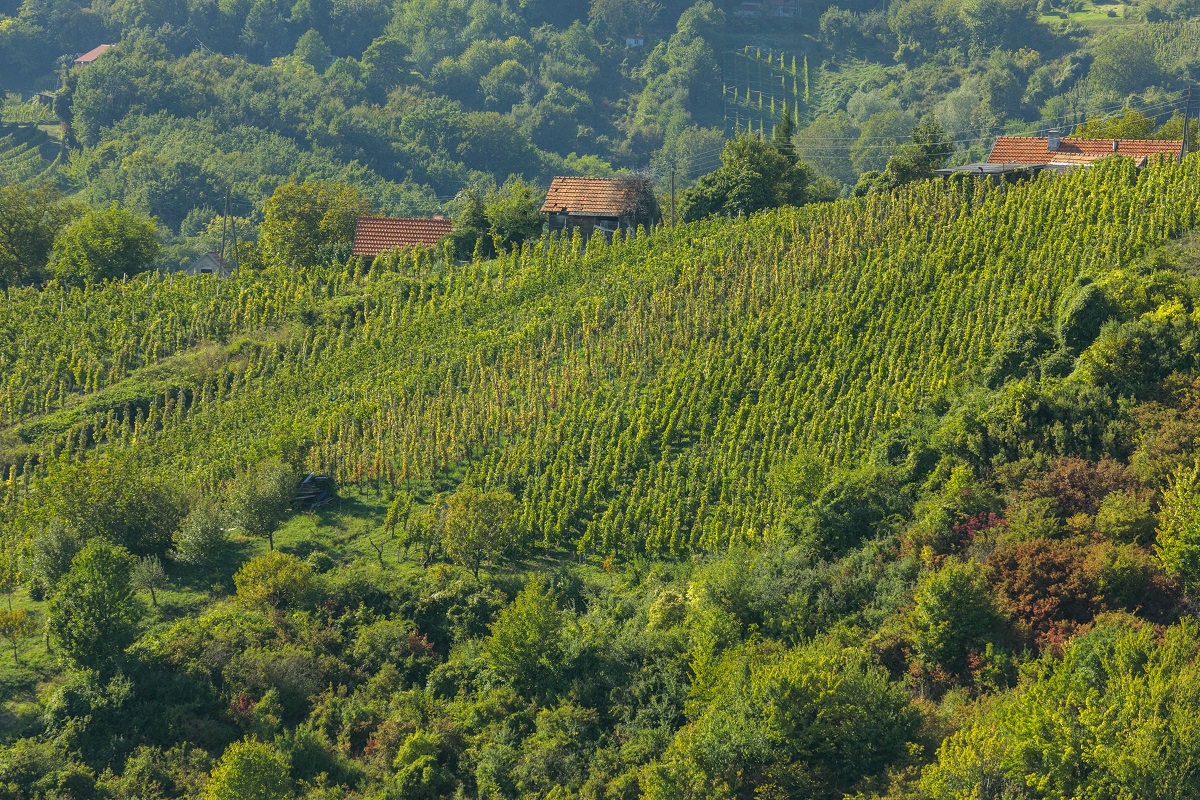
Vineyards in Jastrebarsko / Copyright Romulić and Stojčić
The main goals of the association through the gourmet tourism project are:
- The smart specialization of Zagreb County.
- The development of a tourist destination for gourmet tourism.
- Improving the value chain of gourmet tourism.
- Digitalization and application of new technologies.
- Multi-sector connectivity.
- Development of local production systems (Agri-food).
- Positioning and promotion of Zagreb county.
Cultural tourism in Zagreb County
Cultural tourism in Zagreb County is based on protected natural heritage and cultural and historical heritage. Zagreb County has a rich treasury of natural heritage and beauty. It has many protected natural areas, which contribute to the development and success of cultural, hiking, picnic, and sustainable tourism in Zagreb County.
The association project aims to establish a basis for the integrated management of cultural tourism. Alilović says they want to create a recognizable tourist destination product that will be the main instrument for encouraging tourism competitiveness in Zagreb County. She adds that cultural resources are the leading destination's product in the promotion of a tourist destination, and what makes one destination different from the other is its intangible cultural heritage.
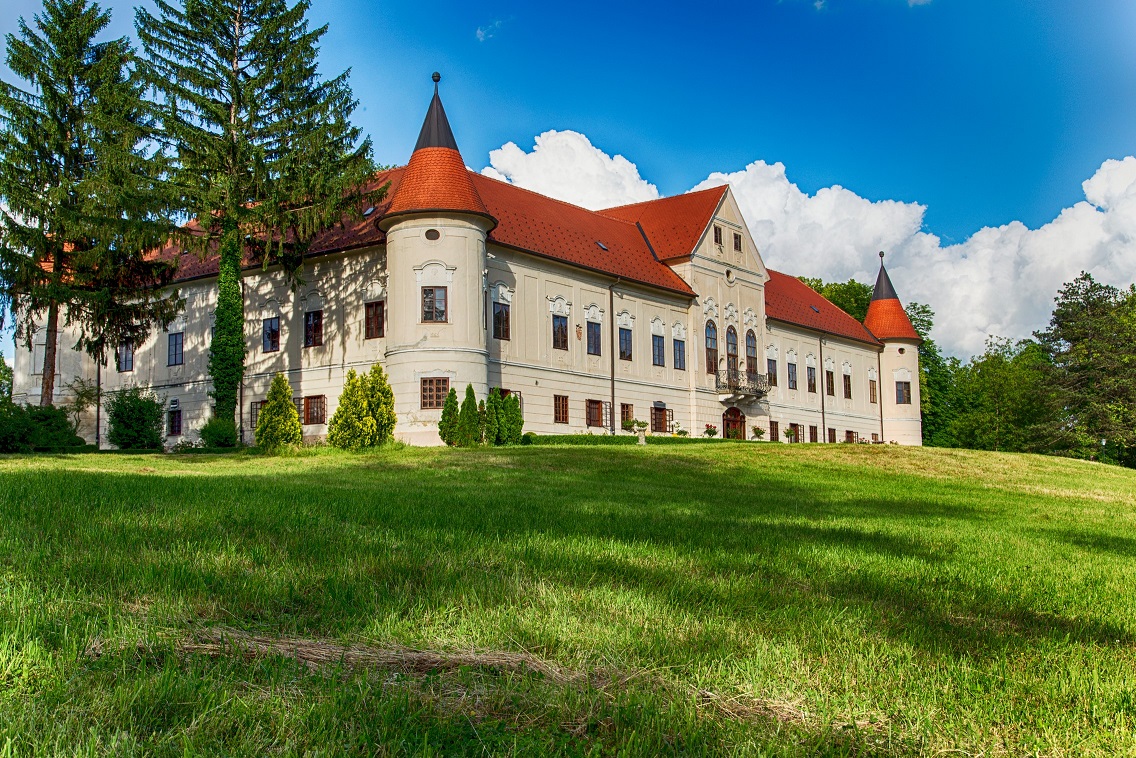
Lužnica Castle, Zaprešić / Zagreb County Tourist Board
"Heritage is the essential element by which a tourist destination's management attracts tourists to the destination. It is an attractive basis for branding. Creativity based on traditional intangible heritage thus pushes the boundaries of the mere functionality of a product.
Through the example of a cultural thematic route, we seek to show how myth can become a potential attractive basis for the development of mythological tourism in Zagreb County. The thematic route's stories and locations offer a choice according to criteria of collective and personal importance. Therefore, the thematic route is an open system that can be toured individually or organized with expert tourist guidance.
Special attention was given to the local identity. For example, the customs of St. George and St. John were highlighted, as well as other customs that are traditionally woven into the Zagreb County and surrounding regions," says Alilović.
The tourist offer of Zagreb County abounds in cultural and historical heritage, such as stories and legends, wooden construction, sacral construction, indigenous architecture, and archaeological finds and monuments of its rich past.
Zagreb County can also boast more than 200 cultural and historical heritage sites. Among them, castles Novi dvori Jelačićevi are a unique example of a complete manorial-economic complex preserved to this day. Then there are forts, manor houses, rich wooden sacral heritage, of which the most prominent is the chapel of St. Barbara in Velika Mlaka. A beautiful example of autochthonous secular architecture is the manor house (curia) Modić-Bedeković in Donja Lomnica. A special attraction is the memorial room of Alojzije Stepinac in Krašić.
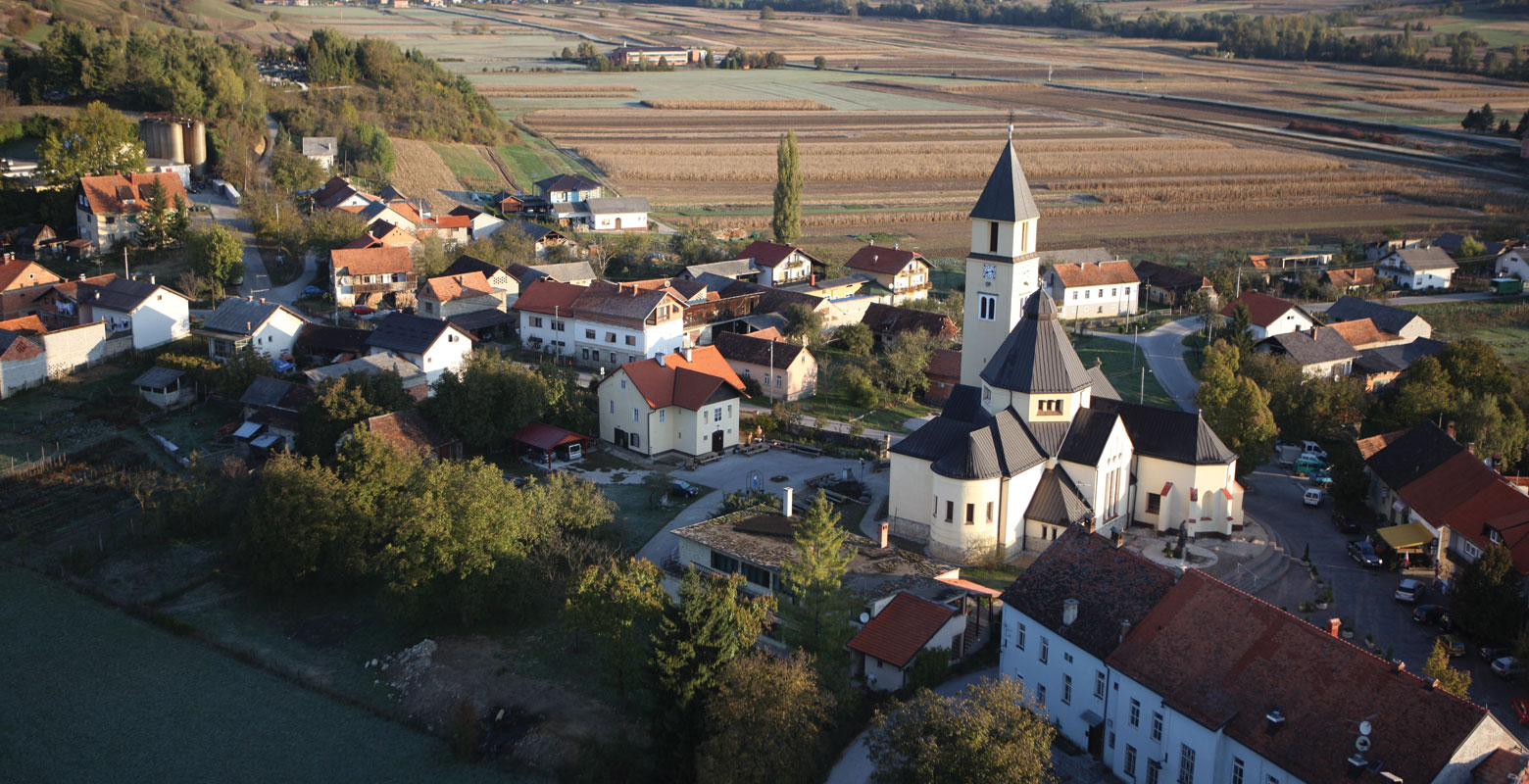
Krašić, Zagreb County / Zagreb County Tourist Board
Valuable is the archeological finds in Ščitarjevo, not far from Velika Gorica, and Budinjak (10th-6th centuries BC), one of the most important prehistoric archaeological sites in Croatia.
The project area includes the tourist boards of the cities of Zaprešić, Velika Gorica, Vrbovec, and Dugo Selo, the tourist boards of the municipalities of Pisarovina and Krašić, and the tourist board of area of the Sava-Sutla valley and hills.
"Agreements of project association in the Zagreb County Tourist Board are an example of planned activities. It is clear that the destination through joint action has the opportunity to better position itself in the market and develop projects that will stimulate overall economic development," said Alilović.
Alilović concludes that the association should result in numerous synergy effects. Not only in quality but also much-needed cost-effectiveness of promotion and project implementation.
For the latest travel info, bookmark our main travel info article, which is updated daily.
Read the Croatian Travel Update in your language - now available in 24 languages.
Join the Total Croatia Travel INFO Viber community.
Croatian Innovator from Samobor Achieved Excellent Success in Sarajevo
December 15, 2020 – Young Croatian innovator from Samobor Matija Hržić won third place for his innovation Smart bee scale at the Fair of Innovations and Entrepreneurship in Sarajevo.
As Večernji list reports, after conquering the ARCA international exhibition. together with colleagues Lovro Stipanović and Josip Oroz, young Samobor innovator Matija Hržić won third place and the Special Award "Sarajevo 2020" in Sarajevo at the first virtual Fair of Innovations and Entrepreneurship "Sarajevo 2020".
His mentor was a teacher at the Vocational High School Samobor and innovator Ivan Vlainić. The award was presented to him by Croatian entrepreneur Mate Rimac, who was also one of Vlainić's students.
Almost two decades ago, professor Ivan Vlainić encouraged Rimac to apply for the first student competition, which he won. A few months ago, he also encouraged Matija Hržić to apply for the Innovation Entrepreneurship Fair "Sarajevo 2020".
Thanks to the award, Hržić's innovation Smart bee scale will bear the International Federation of Inventors' Associations' logo, better known by the acronym IFIA.
What exactly is a smart bee scale? Namely, beehives are often a hundred kilometers away from the beekeepers' residence, making it impossible to monitor them regularly. The scale is therefore equipped with many sensors. Thus, by placing the hive on the scale and implementing its sensors inside the hive, all important data can be available to the beekeeper in real-time. Therefore, the beekeeper can act on time and apply solutions to the observed problems in order to potentially prevent swarming, starvation, or death of his bee community.
Matija was one of the 36 innovators who competed at the Sarajevo 2020 Fair. From one of the best-equipped exercise laboratories in Croatia, Matija's presentation was followed live by students of his Vocational High School and cheered for his best placement.
Matija's innovation was exhibited at the Vocational High School in Samobor, which was also attended by Matija and Mate. Today, many students pass by it who, in addition to professors Ivan and Mate, now have another role model.
To read more news about Croatia, follow TCN's dedicated page.
In Cultura Veritas: Successful International Cooperation of 40 Winemakers
December 6, 2020 – With the project In Cultura Veritas, 200 kilometers of wine roads and 80 cultural heritage sites were connected in the cross-border area between Zagreb County in Croatia and the Obsotelje and Kozjansko subregions in Slovenia.
As Lokalni.hr reports, the main goal of this recently completed project, which lasted 28 months and is worth one million euros, was to contribute to the attractiveness, attendance, and protection of the cultural heritage of the area and increase economic activity through the development of a new sustainable cross-border destination. The goals were also to strengthen the capacity of local stakeholders and the comprehensive promotion of tourist destinations from the Zagreb County and the Slovenian subregions Obsotelje and Kozjansko.
The In Cultura Veritas project was implemented by Zagreb County, with partners the Museum Documentation Center and the Association of Croatian Travel Agencies. Slovenian partners were the Sotla Development Agency, the Municipality of Šmarje pri Jelšah, and the Maribor Agricultural and Forestry Institute.
On behalf of Zagreb County, the project was presented by Ivana Rendulić Jelušić, who pointed out that thanks to this project, the attractiveness of the offer of cultural and wine tourism in Zagreb County was increased following the requirements of modern visitors.
The cooperation of about 40 winemakers from the area of Zelinska, Samoborska, and Plešivička wine roads, the towns of Samobor, Jastrebarsko, and Sveti Ivan Zelina, and their city museums have borne fruit.
As Večernji.hr reports, the attractions of wine and cultural tourism within the new destination have been promoted by the application of modern digital tools, the improvement of the visitor infrastructure, and the renewal of cultural heritage.
This project idea was developed thanks to the recognition of common and insufficiently promoted tourism potentials in the cross-border project area. The area has a rich and somewhat forgotten cultural and historical heritage preserved in about 80 cultural heritage sites located along 200 km of wine roads.
The centuries-old tradition of wine production is an important part of life in this area, and the quality of the wine is confirmed by numerous awards that adorn the walls of wineries on Plešivica, Zelina, Samobor (Croatia), and Šmarje-Virštanj wine roads (Slovenia). It is in this area that the oldest vine in the world is located, the one from Maribor. Also, the fluttering and fresh white wine Kraljevina, which is believed to have been drunk by the famous Beethoven, is an autochthonous variety produced only in the Zelina area in Croatia.
Zagreb County was the leading partner of this project and thus digitized the tourist offer of the new cross-border tourist destination. A digital catalog with the cultural and wine offer of this area is available on the project website, where you can find information about winemakers, museums, natural heritage sites, photographs, multimedia content, and interesting facts and legends about famous people associated with the project area.
The digital catalog is also available on a mobile application, as well as on tourist machines and smart benches set up by the Zagreb County in the center of the cities involved in the project – Sveti Ivan Zelina, Jastrebarsko, and Samobor.
To read more about lifestyle in Croatia, follow TCN's dedicated page.


